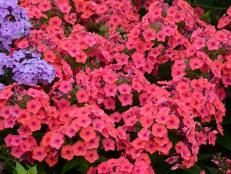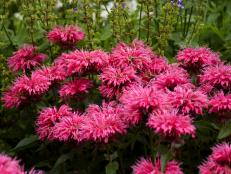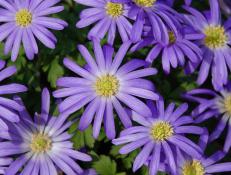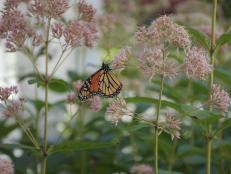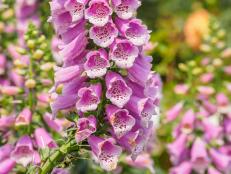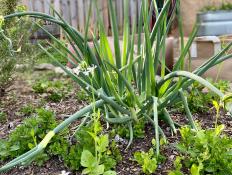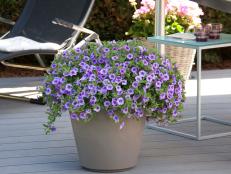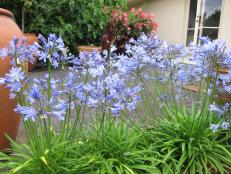Hummingbird-Attracting Hyssops

Hyssops are beautiful, aromatic plants that function as nature's hummingbird and butterfly feeder. Members of the Agastache genus, these low-maintenance plants are bloom from late summer to mid-fall when other flowering perennials have reached the end of their cycle.

"The hyssops are a great source of entertainment in the garden because they are so attractive to butterflies and hummingbirds," says David Salman, chief horticulturist and owner of Santa Fe Greenhouses and High Country Gardens in New Mexico. "The large-flowered hummingbird mints (also an Agastache) have long, tubular flowers, and they actually have co-evolved with hummingbirds to be their pollinators."
Discovered by Salman and named for his wife, Ava's hummingbird mint is an extremely vigorous and large growing selection. A mature plant can reach four to five feet tall.

'Desert Sunrise', another product of Salman's hybridizations, is a cross between pink- and orange-flowering parents. The result is a beautiful multi-colored spike. Agastache 'Blue Fortune' is a cold hardy hybrid popular with butterflies.
Other sweet-smelling hyssops are named for their scents. Texas hummingbird mint is also known as double-bubble mint because of its sweet fragrance.

Licorice mint hyssop is a large orange-pink-flowering cultivar with a complex smell of licorice and hyssop.
While there are many selections of hyssops available, there are two distinct types: ones with large flowers like 'Desert Sunrise' and small-flowered ones like Agastache neomexicana. The large-flowered hyssops are a hummingbird favorite while the smaller-flowered cultivars are a favorite of butterflies. Another great hyssop quality? They repel deer.
Planting and Maintenance of Hyssops
To plant his hyssops, Salman begins with a bed of loose soil. Using a hand trowel, he makes individual planting holes in between his drip irrigation system. To enrich the soil, he adds a generous handful of organic fertilizer. Be careful not to overdo it because hyssops don't like soil that's too rich. Next he adds a handful of high-quality organic compost to serve as the backfill behind the plant's root ball.
Before putting the hyssop in the ground, scoring the sides of the root ball will help the roots spread once in the soil. Plant it so the top of the root ball is just below the level of the soil. Creating a depression in the soil around the plant will help to hold any extra irrigation water.
Although they're low maintenance, hyssops like an annual application of mulch and fertilizer in the fall. Salman recommends leaving plant stems standing over the winter to help them through the cold season, then cutting the plant back in mid-spring.
Because the plants grow up, rather than out, they may need to be staked during the summer. "Some of the larger selections like 'Desert Sunrise' may need occasional staking if they get floppy, but it only needs to be done once," says Salman.
Agastaches like to have their crown (the area between the roots and the stems) protected from excess winter moisture. Gravel mulch will pull double duty for the plants. It will help keep the roots cool in the summer and protect them from freezing temperatures in the winter.






